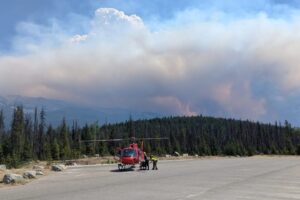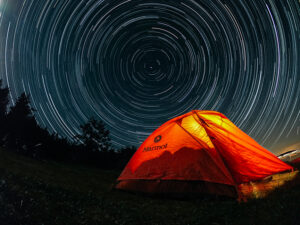W.O.W. This clip has my mind is reeling. Sawanobori surprises, captivates, enthralls, motivates and leaves me gasping. The challenge is for me to explain what made 12 minutes of viewing so impressive.
It’s November 2019, and media coverage of Japan is overloaded with reports of the rugby World Cup and the upcoming Olympics. Excited fans decked out in their team’s colours dominate the evening news. Empathetic sorrow flows to a losing team’s fans. Adding to such coverage, tourism footage glamorizes Japan as a perfect holiday destination to witness the world’s best athletes perform their chosen sport.
Divorced entirely from such hubbub, this film portrays a peaceful Japanese nature located in what hardly seems to be a country thronging with 127 million people. Here, in the dense foliage, a group of climbers practice an obscure sport known as Sawanobori.
If the word Sawanobori is new to you, you’re not alone. It’s so recent that it brings up barely a page of results on Google. Most of them refer to this expedition.

Sawanobori practitioners climb up, or directly beside, a waterfall.
Sawanboroi derives from rock climbing. Think of it as a sub-discipline. Take the typical features of climbing — gradient, height — then add a few extras: slippery surfaces, moss and slime, an unknown weight of powerful water raining down from above. There you have Sawanobori. It’s rock climbing up a waterfall, sometimes called shower climbing. Occasionally practitioners barrel straight up the centre of the stream, but usually they go a little to the side, where the cliffs are sodden but the main current doesn’t trace.
The sport takes us away from the dusty, desert surrounds where rock climbing often features, and into lush jungle. Here, the adventure unfolds.
James Pearson, Caroline Ciavaldini, Yuji Hirayama and Toru Nakajma are here to Sawanobori up Shomyo Waterfall. At 350m, with four distinct drops, it’s Japan’s tallest. It is located in a region where waterfalls are considered sacred, “a place where Gods can dwell”.
It looks stunning. Only the rush of swift, moving water breaks the silence. The lush green vegetation is damp from spinoff droplets that increase or decrease in volume with the weather. A lot of people come to admire Shomyo during their visit to Japan. Admirable though it is, the team is not here to admire but to achieve.
Unlike other sports, Sawanobori involves places that move. The water’s force is unknown until it is felt directly, and at that point, the participant is already committed.
For me, the nature and surroundings of this video are the most captivating. But the climb itself features a moment that eclipses even this scenery.
The foursome recognize that somehow they must cross the waterfall itself, to the other side. They elect Toru Nakajma for the task. “It’s nice of them to believe in me,” muses the Japanese climber. “But it’s quite risky.”
It looks risky. If he falls into the waterfall’s grasp during the jump, it’s hard to imagine how his companions will extricate him against the force of the water. And it is impossible to know how difficult the jump is, until already jumping.

Nakajma takes a leap for the team.
Nakajma is high off the ground, perched on the edge of an extremely forceful section of water cascading down the cliff. His focus is palpable as he prepares to commit. He steps onto a submerged rock to steady himself before the final leap. Then comes a momentous stride across the water, arching over the stream, and he lands in a crouched position on the other side…and holds firm. That’s a WOW from my armchair, and ultimately a move that allows the team to complete their mission.

Enormous relief when he makes it across.
WOW reactions don’t come from nothing. Already I was admiring the film for its green, lush, jungle scenes. But once Nakajma decides to leap the waterfall, that’s where my jaw really struggled to lift off the floor.






